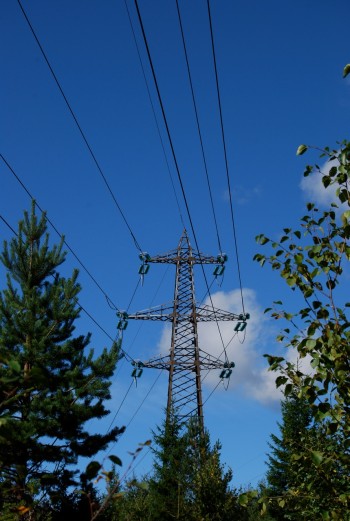Prime Minister Jens Stoltenberg was back on the defensive Monday morning, after Norwegian Broadcasting (NRK) reported that his government may not set up an independent review of controversial power lines over Hardanger after all. Local politicians in the scenic mountain area fear they’ve been fooled.

NRK reported that the government is considering ordering various reports from experts that its own Oil and Energy Minstry will evaluate. When local politicians opposed to construction of overhead power lines met with Stoltenberg and his oil and energy minister, Terje Riis-Johansen, last week, they thought an independent commission would do the evaluation.
Torill Selsvold Nyborg, mayor of Hardanger’s home county of Hordaland, was among those at the meeting and told NRK that it “clearly” came out that an independent, expert commission (utvalg, in Norwegian) would evaluate whether an undersea cable could save the landscape from the sight of overhead power lines. That was the impression many media outlets had as well.
The meeting and its conclusion were widely viewed as a retreat by Stoltenberg and a victory for the local politicians, and helped resolve what’s developed into the biggest political conflict in Norway so far this year. It also took the edge off planned protests in Hardanger over the weekend, where hundreds turned out instead of the thousands expected before Stoltenberg agreed to re-evaluate the possibility of undersea cables.
Now Stoltenberg claims the local politicians have no reason to feel fooled and that neither he nor his government is already breaking any promises. He claims neither he nor his government agreed to set up an independent commission.
“What we said at the meeting and at the press conference afterwards was that there would be a review by external experts,” Stoltenberg told NRK on Monday morning. “We’ll get back to whether it will involve one or several reports.
“But there regardless will be full public disclosure around the evaluations, and they will be conducted in good cooperation with the Hardanger-area mayors. It’s important to them that the case be evaluated by independent circles, and that will happen.”
He said there are “good arguments for and against” the prospect of undersea cables, and that the government “will be open” about how they’ll be weighed up against one another.
“The politicians must evaluate the various alternatives, in terms of how secure their delivery of power will be and how high the costs will be on electricity bills,” Stoltenberg said.
It’s generally accepted that undersea cables would be far more expensive than overhead power lines and masts. Power line opponents, however, contend claims of NOK 3,000 extra per power customer per year are excessive. Others claim the state should pick up more of the bill, since it owns power provider Statkraft and extracts dividends from Statkraft, instead of passing it on as a form of indirect tax via electricity bills.
Around 700 demonstrators, meanwhile, took part in an organized power line protest on Saturday, marching along the route that the power lines would take. That was fewer than initially expected, following the compromise believed to have been worked out last week between Stoltenberg and the local politicians, but participants were satisfied and vowed to keep up the fight.
The demonstrators came from parties on both ends of the political spectrum in Norway and included everyone from environmental advocates to top business leaders like Johan Fredrik Odfjell. They don’t want to see Hardanger, known as being among Norway’s most scenic fjord areas, marred by power lines and masts.
Views and News from Norway/Nina Berglund
Join our Forum if you’d like to comment on this story.

